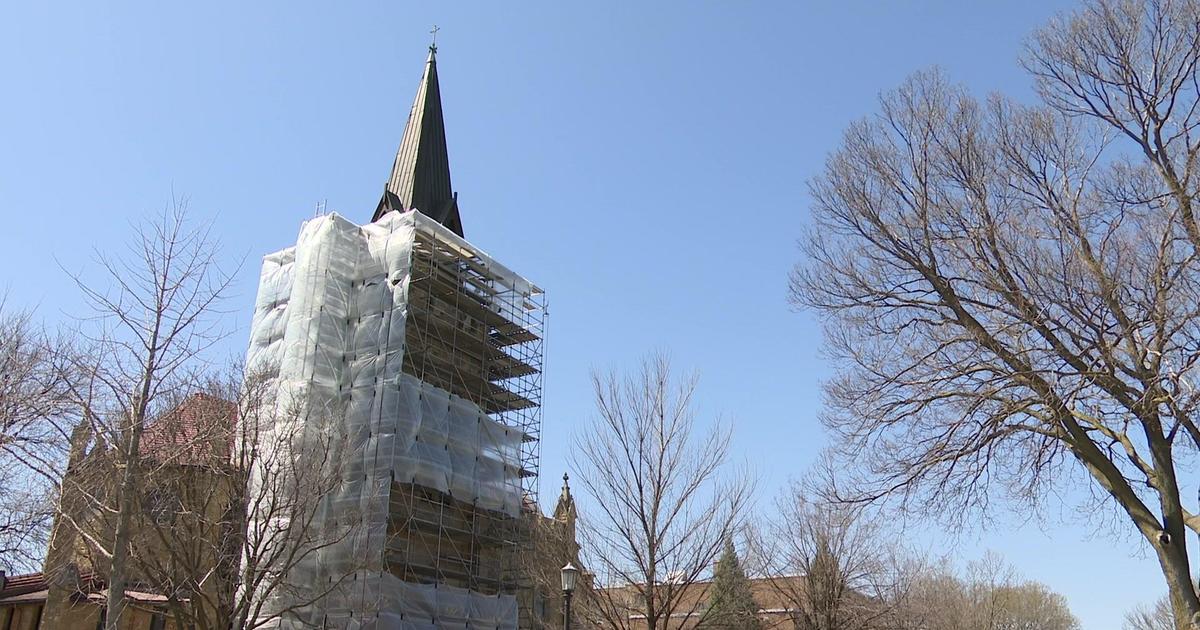St. Paul Prepares For Higher Crest
ST. PAUL (WCCO) -- With the highest water from spring flooding still about one week away, city and county crews are working around the clock to button downtown St. Paul's riverfront.
On Tuesday, forklifts were lifting pallets of heavy sandbags and concrete highway barriers. Teams of workers were busy placing rolls of plastic and positioning diesel pumps.
The expected crest of the Mississippi River in downtown St. Paul should happen March 29. But suddenly, all bets are off. Mother nature is throwing river forecasters a nasty curveball. A late season storm is dumping heavy snow and rain across a wide swath of Minnesota.
Rick Larkin is the director of St. Paul's Emergency Management.
"What we do know is that all that water, whether snow or rain, is going to end up in that river and come here through St. Paul," Larkin said.
That's challenging for those making flood plans. What it means to St. Paul officials is that a clay levee being constructed at Market Street and Warner Road may have to be built to a slightly higher elevation. To do that, crews will lay down a wider base of clay and class-five gravel.
"We will see some water on this road but right now we don't know how high it's going to go," Larkin said, referring to Warner Road.
What they do know is that water will flood basement parking structures at the upper landings. A system of diesel pumps are already in place to pull water out of the basements. Pumps are also being located at downtown lift stations and storm sewers to prevent floodwater from backing up into downtown.
Still, the biggest job has yet to take shape. Larkin says the wet weather is delaying trucks from hauling heavy loads of clay and gravel to construct a temporary levy downtown.
"If everything is working well it's a four-day process," he said. "Depending on how high we have to build, it could be as many as six days, so we're really racing the weather and the clock right now."
Crews are also racing the clock down along Childs Road, the main access into the Metropolitan Wastewater Treatment Plant. There, trucks and cranes are placing heavy concrete barriers along the edge of a earthen berm.
It will become the entry point should floodwaters overtake Childs Road, giving workers a way in to the plant.
"We expect it to be a major test but we've been through it before so I am confident we can handle it," said Jim Schmidt, maintenance service manager at the plant.
Keeping the treatment plant open is vital to the entire metropolitan area, so the flood plan includes a way to get workers to the plant should all roads become impassable.
"We have hired a helicopter service that will fly from Flemming Field and bring employees from there to here," he said.
Still, floodwaters would have to top the record 1965 levels by three feet to breach the plant's concrete floodwall.
But other heavy industries near the treatment facility are busy taking additional precautions. Plastic covered earthen levees surround important salt, chemical and cement facilities.
Schmidt adds that river water is already entering the effluent outlet pipes. To prevent water from backing up into the pipes, blocking discharge, large pumps are being pressed into service.
"We have effluent pumps, five of these 600 horsepower pumps to lift the water and put it out into the river. That way we keep accepting, treating and discharging the sewage without interruption," said Schmidt.



